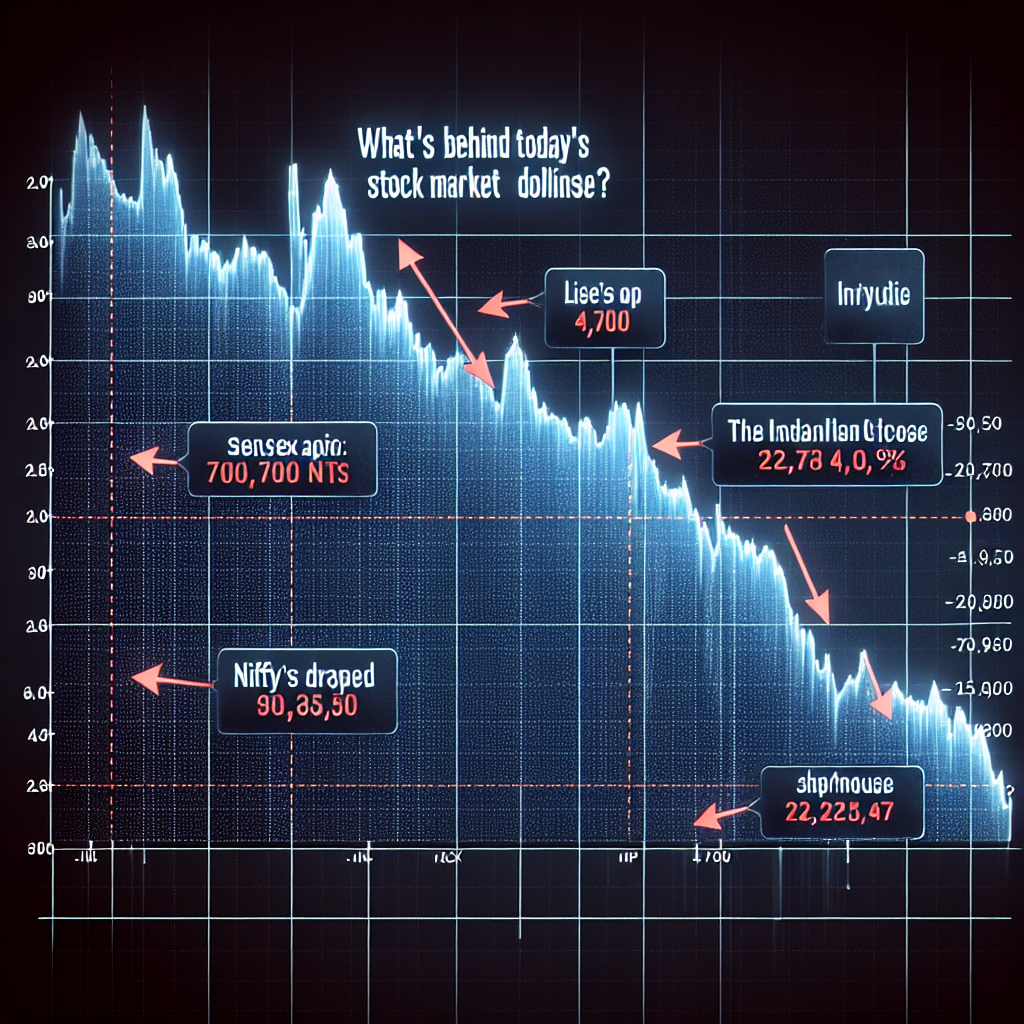Introduction
India’s stock markets experienced a significant downturn on Monday, with the Sensex plunging over 700 points and the Nifty 50 index sliding to around 24,750 levels. This sharp decline left investors worried and confused about the sudden reversal in market sentiment. In this blog post, we’ll explore the reasons behind the fall in Indian stock markets, dissect the contributing factors, and discuss what investors should watch going forward.
How Did the Markets Perform?
Key Benchmarks Tumble
On May 20, 2025, the BSE Sensex closed down by more than 700 points, reflecting a drop of nearly 1%. Simultaneously, the Nifty 50 index dropped below the critical 25,000 mark, ending near 24,750. Such significant declines in benchmark indices usually point to macroeconomic concerns or investor sentiment shifts.
Sectoral Weakness
Pressure was seen across sectors. Especially:
- Banking and financial stocks were among the biggest losers.
- IT and auto sectors also faced moderate selling pressure.
- Mid- and small-cap indices mirrored the broader market trend, indicating a broad-based sell-off.
What’s Causing the Indian Stock Market to Fall?
1. Weak Global Cues
Global markets set the tone early in the day with most Asian and European indices trading in the red. Concerns over slow growth in China and rising bond yields exerted downward pressure on investor confidence worldwide. The lack of positive leads from international bourses amplified bearish sentiment back home.
2. Foreign Institutional Investor (FII) Selling
Heavy selling by FIIs has emerged as a critical trigger for the market fall. In recent sessions, FIIs have pulled out considerable capital amid global uncertainties, particularly concerning the US Federal Reserve’s interest rate policy. Risk-averse behavior by foreign investors often leads to swift corrections in emerging markets like India.
3. Volatility Ahead of General Elections
The upcoming national elections continue to add an element of uncertainty. Although market participants are largely optimistic about continuity and reform, any hints of political instability or a shift in government policies can make investors jittery. Volatility is a common feature during election seasons.
4. Mixed Corporate Earnings
Quarterly earnings have been a mixed bag. While some large corporations managed to meet or surpass expectations, several others disappointed analysts. Weak earnings can dent market momentum, particularly for index-heavy sectors like banking and IT.
5. Concerns Over Inflation and Interest Rates
Inflation remains a persistent concern, with both wholesale price and consumer price indices showing stickiness. Moreover, any indication from the Reserve Bank of India (RBI) towards rate hikes or continued monetary tightening adds to investor caution.
Market Reactions & Expert Commentary
Volatility Index on the Rise
India’s volatility index, often referred to as the “fear gauge”, spiked in today’s session, indicating heightened anxiety among market players. A high volatility index often points to more dramatic price movements, both on the upside and downside.
Expert Views
Market analysts weighed in on the sharp drop, noting key concerns:
- “This correction was due. The Sensex and Nifty were trading near all-time highs with stretched valuations,” said a senior fund manager at a leading mutual fund.
- “The absence of strong triggers along with pre-election caution is driving short-term trades,” noted an equity strategist.
What Should Investors Do Now?
Navigating a volatile market can be challenging, but it’s not the time to panic. Here are some strategies investors could consider:
1. Stay Invested for the Long Term
Long-term investors should avoid making hasty exit decisions based on daily market fluctuations. Quality stocks tend to recover faster and create wealth over time.
2. Diversify Your Portfolio
Maintain a balanced allocation across equity, debt, and gold. Asset diversification can minimize risk during uncertain times.
3. Look for Buying Opportunities
Market corrections can provide excellent entry points into fundamentally strong stocks that have become cheaper.
4. Keep an Eye on Macro Indicators
Stay informed about inflation data, RBI policies, and global economic trends, as these will shape future market movements.
Conclusion
The Indian stock market’s sharp fall on May 20, 2025, is the result of several converging factors, including weak global cues, profit booking, FII outflows, and election-related caution. While such corrections are concerning, they are also part of the natural market cycle. Investors should stay calm, focus on fundamentals, and avoid making impulsive decisions based on short-term market noise.
Stay Updated
For the latest market news, investment tips, and economic updates, make sure to bookmark this blog and follow our updates. Remember, staying informed is the first step towards becoming a successful investor.



Leave a Reply